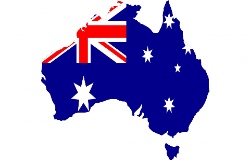Growth of Chinese Margin Accounts Drove Bubble & Crash
Growth of Chinese Margin Accounts Drove Bubble - Now Drives the Crash
- Restrictions on
borrowing to speculate were eased in
2010
- Middle class savers gradually
saturated the market trading on leverage
- Market crash
began as government tried to reign in leverage in overheated
markets
- Leverage amplified gains on the up-leg,
amplifies losses on down-leg forcing further sell offs
-
Policy u-turns could not halt crash
Chinese markets bounced last night following drastic intervention by the state when it banned large players from selling their shares in listed companies - arresting the over 30% decline of the past four weeks.
By definition, a market ceases to be a market if selling is prohibited so it is far from clear at this point if the government can bring stability back into the system.
At the heart of the problem is the use of credit by “investors” to take up larger positions than they might have if they were gambling only with their savings. It was this trading on leverage which ignited the bubble and it is this same dynamic which is now applying downward force.
Until 2010 trading on leverage was tightly regulated in China - only those who could afford to lose could use it. Since that time, however, restrictions have been gradually eased although speculators still have to put up 50% of their own cash.
As momentum grew more middle class speculators entered the market which led to the mania of the past twelve months. In that time the value of shares listed on stock markets more than doubled to $10 trillion. Bloomberg estimate that the surge was financed by $339 billion of new credit.
ENDS


 UNICEF Aotearoa NZ: Myanmar Earthquake A Further Blow For Millions Of Children
UNICEF Aotearoa NZ: Myanmar Earthquake A Further Blow For Millions Of Children Greenpeace: 'Desperate And Deceitful'- Deep Sea Mining Frontrunner Turns Its Back On Pacific Nations
Greenpeace: 'Desperate And Deceitful'- Deep Sea Mining Frontrunner Turns Its Back On Pacific Nations 350.org: Australia Announces Election Dates, Pacific Islanders Rally To Vote For Climate
350.org: Australia Announces Election Dates, Pacific Islanders Rally To Vote For Climate UNICEF Aotearoa NZ: Global Aid Funding Cuts - 14 Million Children At Increased Risk Of Severe Malnutrition And Death
UNICEF Aotearoa NZ: Global Aid Funding Cuts - 14 Million Children At Increased Risk Of Severe Malnutrition And Death Oxfam Aotearoa: Humanitarian Operations In Gaza Severely Hampered; Famine Risks Increasing
Oxfam Aotearoa: Humanitarian Operations In Gaza Severely Hampered; Famine Risks Increasing UN News: Migrant Deaths In Asia Hit Record High In 2024, UN Data Reveals
UN News: Migrant Deaths In Asia Hit Record High In 2024, UN Data Reveals